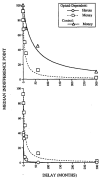Behavioral and neuroeconomics of drug addiction: competing neural systems and temporal discounting processes
- PMID: 17101239
- PMCID: PMC2033431
- DOI: 10.1016/j.drugalcdep.2006.09.016
Behavioral and neuroeconomics of drug addiction: competing neural systems and temporal discounting processes
Abstract
We review behavioral- and neuroeconomic research that identifies temporal discounting as an important component in the development and maintenance of drug addiction. First, we review behavioral economic research that explains and documents the contribution of temporal discounting to addiction. This is followed with recent insights from neuroeconomics that may provide an explanation of why drug-dependent individuals discount the future. Specifically, neuroeconomics has identified two competing neural systems that are related to temporal discounting using brain-imaging techniques that examine the relative activation of different brain regions for temporal discounting. According to the competing neural systems account, choices for delayed outcomes are related to the prefrontal cortex (i.e., the "executive system") and choices for immediate outcomes are related to the limbic brain regions (i.e., the "impulsive system"). Temporal discounting provides a useful framework for future imaging research, and suggests a novel approach to designing effective drug dependence prevention and treatment programs.
Figures

References
-
- Ainslie G, Haslam N. Hyperbolic discounting. In: Loewenstein G, Elster J, editors. Choice Over Time. Russell Sage Foundation; New York: 1992. pp. 57–92.
-
- Alessi SM, Petry NM. Pathological gambling severity is associated with impulsivity in a delay discounting procedure. Behav Processes. 2003;64(3):345–354. - PubMed
-
- Baker F, Johnson MW, Bickel WK. Delay discounting in current and never-before cigarette smokers: Similarities and differences across commodity, sign, and magnitude. J Abnorm Psychol. 2003;112(3):382–392. - PubMed
-
- Barkley RA. ADHD and the Nature of Self-Control. Guilford Press; New York: 1997.
-
- Barkley RA, Edwards G, Laneri M, Fletcher K, Metevia L. Executive functioning, temporal discounting, and sense of time in adolescents with attention deficit hyperactivity disorder (ADHD) and oppositional defiant disorder (ODD) J Abnorm Child Psychol. 2001;29(6):541–556. - PubMed

